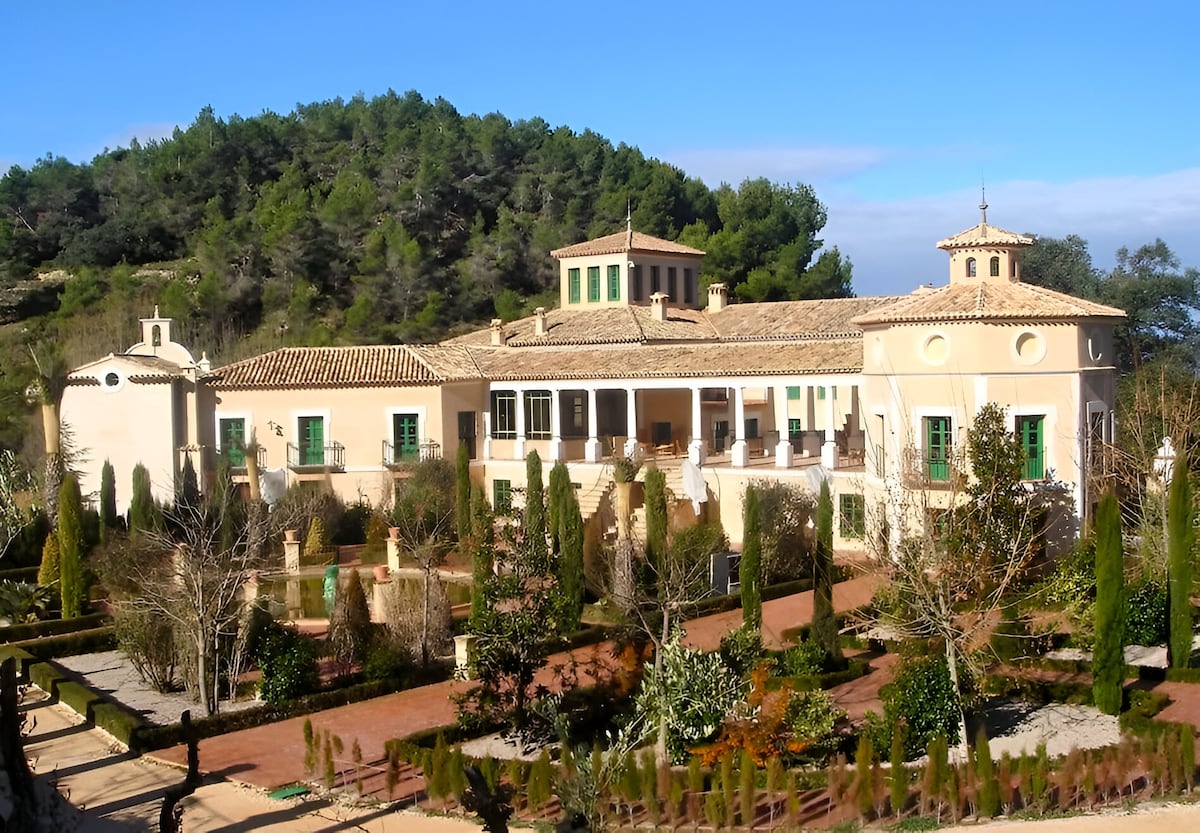Living like a nobleman: The highly profitable trend of restoring historic buildings The renovation of palaces and unique houses is gaining momentum among national and foreign investors for private use or with the idea of converting them into tourist accommodations or museums Major capital cities and their surrounding areas remain the first choice for investors and funds seeking historic buildings . Madrid is a clear example: last year, more than €740 million ($841 million) was invested in the purchase and renovation of this type of property, according to the consulting firm CBRE. “These are generally listed buildings of classical architecture with representative facades and entrances that are being renovated for another use,” says María Mayoral, head of change of use at CBRE.
Beyond the cities, there are unique assets in other locations in Spain. The purchase of historic properties , from palaces to stately homes, often in disuse, has become a niche business for investors who opt to renovate them with the aim of converting them into homes for personal use, or transforming them into public facilities, usually hotels. Lançois Doval, a website specializing in unique properties, estimates that, in 2025, this segment will continue to be characterized by the diversity of international investors, although domestic investors will maintain their prominence after having led 75% of unique asset transactions in 2024.

“The rehabilitation of historic buildings has become one of the main investment options, with a focus on preserving architectural heritage while incorporating modern amenities,” acknowledges Narcís Casteyó, director of the luxury real estate agency Lucas Fox Girona and a specialist in the management of rural and historic properties. Sonia Lara, director of the association of Historic and Unique Houses of Spain, adds: “The interest in restoring historic houses lies in preservation, while seeking a source of income to facilitate their maintenance, whether as a museum, cultural space, or tourist accommodation.” This association includes 450 properties, of which nearly a third are open to the public and generate income.
The costs of acquiring and renovating a historic home vary depending on its location, condition, and size. “Sometimes they can be more affordable than new homes, offering an attractive initial investment, but depending on their state of preservation, their intended use, and current regulations, the costs of undertaking their restoration can reach unsustainable levels,” Lara points out. Together with his wife Myriam, Andrés Cano has owned a 1,700-square-meter Renaissance mansion in Ciudad Rodrigo (Salamanca) since May 2023.
Built in 1550 and first renovated in 1870, he and Myriam have been renovating the property since October 2024. They plan to invest twice the amount they spent on the property. The renovation is primarily focused on making the house more comfortable through improved energy efficiency (geothermal energy) and the redesign of the family home on the upper floor and the relocation of two more rental properties on the lower floor.
Despite the investment, they acknowledge that they have not received state aid to preserve the cultural heritage. “Both the regional government of Castile and León and the city council of Ciudad Rodrigo have been active collaborators, but we have not been eligible for subsidies because the property is owned by a company,” Cano explains. However, he continues, “our ambition is not to recover the investment, but to be able to maintain and enjoy it in good condition.
” José María Torres, legal advisor for Historic and Unique Houses of Spain, explains that only historic properties declared as Assets of Cultural Interest (BIC) are exempt from paying wealth and land value tax — provided their owners request it and the property is not used for any commercial activity. The Ciudad Rodrigo palace, despite having full protection, is not a BIC. “Historic properties not listed as BIC only receive the aid offered by their regional or local government for all properties, or the reduction of value-added tax from 21% to 10% for renovation projects,” he explains.
Renovation guarantees an instant increase in a property’s value. For Casteyó, “the appreciation can vary, especially after the significant increase in the cost of construction materials in recent years.” In general, he believes, properties in high-demand areas, such as the Baix Empordà in Girona, in the northeastern region of Catalonia, can experience a value increase of between 30% and 40% if the renovation preserves the property’s historic character while incorporating modern improvements that make it attractive to current buyers.
In any case, “the appreciation of a unique or historic property is quantified both by the renovation (whether it is in ruins or in good condition) and by the investment in adapting it to the use or category of the business established. There is no single criterion,” notes Robert Menetray, head of Lançois Doval. One of the unique houses in this real estate agency’s portfolio, near Alcoy (Alicante), was completely restored in 2005 to become a luxury hotel .
The French owner acquired this property, which dates back to the late 18th century, in 2000 for a price of €280,000 ($318,430). At the time, the house was completely abandoned, and the restoration was a painstaking process that lasted a decade. Furthermore, to preserve the house’s authenticity, carefully selected antique materials were acquired.
The house, now converted into a hotel, is currently for sale for €4.9 million ($5.57 million).
“The appreciation in value, the possibility of new uses, and the charm of these historic properties ensure that investing in this type of property remains an attractive long-term option,” concludes Menetray. Sign up for our weekly newsletter to get more English-language news coverage from EL PAÍS USA Edition Tu suscripción se está usando en otro dispositivo ¿Quieres añadir otro usuario a tu suscripción? Si continúas leyendo en este dispositivo, no se podrá leer en el otro. ¿Por qué estás viendo esto? Tu suscripción se está usando en otro dispositivo y solo puedes acceder a EL PAÍS desde un dispositivo a la vez.
Si quieres compartir tu cuenta, cambia tu suscripción a la modalidad Premium, así podrás añadir otro usuario. Cada uno accederá con su propia cuenta de email, lo que os permitirá personalizar vuestra experiencia en EL PAÍS. ¿Tienes una suscripción de empresa? Accede aquí para contratar más cuentas.
En el caso de no saber quién está usando tu cuenta, te recomendamos cambiar tu contraseña aquí. Si decides continuar compartiendo tu cuenta, este mensaje se mostrará en tu dispositivo y en el de la otra persona que está usando tu cuenta de forma indefinida, afectando a tu experiencia de lectura. Puedes consultar aquí los términos y condiciones de la suscripción digital.
Madrid Alicante Girona IBI BIC Candy Clark and her Polaroid vision of New Hollywood: ‘Back then people would just pose, they weren’t so fussy about their photos like they are today’ Sexting among the younger generations reflects their countries’ traditional morals Francis, the pope who tried to ‘demasculinize’ the Church and angered conservatives Los Buitres de Culiacán, forefathers of the narcocorrido: ‘Imagine Peso Pluma singing purely romantic songs...
that’s not him’ NASA astronaut Kathryn Thornton: ‘All the progress we’ve made over the past 70 years is in peril’ Cartel violence erupts in Michoacán, Jalisco and Guanajuato in a new wave of attacks Trump deported fewer people than Obama, Clinton or Bush, but more indiscriminately The corrupt Pope who sold his office for money and forced the Church to create the conclave At the horror ranch in Mexico: ‘When I saw what happened, I couldn’t speak. I started to cry’.
Top

Living like a nobleman: The highly profitable trend of restoring historic buildings

The renovation of palaces and unique houses is gaining momentum among national and foreign investors for private use or with the idea of converting them into tourist accommodations or museums










